As I sit before the television I see events hurtling across West Asia at a speed faster than can be discerned. I follow events almost minute to minute but find it difficult to make strategic sense out of many of them. It’s why I pity the layman observer who gets his morning dose of news and cannot reflect deep enough on them. I have no doubt that West Asia continues to occupy the core center of strategic affairs in the world and competing centres in Central Asia and the South China Sea are yet many light years behind. Rebalancing is fine as a concept and the US may keep trying to dilute the significance of the region by simply trying to ignore it but as things stand its attention will not wane. A review of the situation after the unexpected entry of Russia into the war zone is necessary to make any sense of what is happening.
The Russians came in for a variety of reasons. It may be good for clarity to be military like in bulleting these.
Firstly, Russia believes that the West was just not serious about defeating the ISIS. The US and its allies prefer a policy of drift allowing the emasculation of Bashir Assad and then effecting regime change. The larger picture of victory of the so called moderates without a simultaneous victory of the ISIS against Assad is their hope and aim which is unachievable. Besides what the eventual color of the moderates, who are supported by non ISIS groups such as Al Nusra and Al Qaida, will be is unpredictable.
Second, Russia fears that time will only allow ISIS to emerge stronger as the US led air campaign and the creation of counter groups are both foundering.
Third, the lack of focused action would give scope to ISIS to expand its activities to Afghanistan and thence to Central Asia. With the situation in Af-Pak none too certain the ISIS is bound to take advantage of the turbulence. Its move into Central Asia will have severely negative effects on Russia’s near abroad region.
Fourth, the only Russian military facility yet intact in West Asia is the port city of Latakia in Syria and its hold over that for the sake of control of the West Mediterranean is essential. The fighting was getting dangerously close to this facility and therefore ‘depth’ had to be afforded to it to keep it from harm’s way. Bashir Assad’s defeat and fall would have meant the end of Russian military presence.
Fifth, Putin probably believed that after Ukraine where he had scored diplomatically this was the opportunity to demonstrate the resurgence of Russia. During 2008 when it had conducted operations in Ossetia the West had reported the pathetic state of equipment and weaponry of the Russian Army. It was important to break the perception that Russia was militarily regressing and weak.
A few things stand out from the above analysis. It is clear that Russian interests do not look at any permanent presence but just assurance of a situation whereby Syria remains united and the port facilities are intact; defeat of the ISIS is of course the main military objective. Russia knows that in such an environment where Islamic fighters are hidden in nooks and corners air power alone can never suffice. It also knows that the employment of airpower has to be for the purpose of weakening the capability of the ISIS and those others opposing Assad, something which has not been adequately done by the Coalition. Follow up with boots on the ground is an imperative but for that it is depending on ability of Iran to muster the forces. The National Defence Forces or NDF in Syria has been in the making for over three years and it has acted as the main infantry for Syria in the civil war. The raising, equipping and training has been personally overseen by Iran’s well known and high profile Quds Force commander General Qasem Suleimani. Iran and Hezbollah played a key role in the formalization of the NDF along the model of the Iranian ‘Basij’ militia", with the NDF recruits receiving training in urban guerilla warfare from Army of the Guardians of the Islamic Revolution (IRGC). Apparently this still loyal 1,50,000 strong force along with 5000 Hezbollah frontline fighters, some mechanized elements of the Russians and some supervisory military leaders from Iran will form the ground elements to effect the push towards Aleppo. CNN is already reporting the Russians having targeted 60 major targets in 24 hours and the battle for Aleppo has begun. It is reported that some understanding about targets for aerial bombing has been reached between the US and Russia but what and how this will work remains extremely vague. Will the US sit back and allow the Free Syrian Army and others, who it supported in the vain hope that they will defeat both Assad and the ISIS, to be decimated by the Russian-Iranian-Hezbollah- Assad combine? The doubts are because of the US disinterest in the region and caution arising from the approaching US Presidential Election. However, the increasing Russian involvement may progressively bring the US back into the game.
Surprisingly what seems to emerge is that far from an opposition from Tel Aviv it is actually tacit agreement with the Israelis that drives the Russians even though it also has Iranian support. This complicates the equations even further. Tel Aviv considers ISIS an enemy as much as it does Iran and has Saudi support in that. Possibly, as long as advanced weaponry is being used by Russia only to support the Allawite-Hezbollah combine and no transfer is done it may meet Israel’s need. Defeat of the ISIS is a major objective for Israel too since Syria and Iraq in ISIS hands would lead to an almost certain war with the renegade group.
The one player who could make a major difference is Turkey but it is bound by its internal problems. Recep Erdogan is in no position to act decisively. The Turkish – Syrian border is the route of most movement of recruits and military hardware. The Russians are unlikely to be sensitive to any Turkish needs except the grave humanitarian situation arising out of the mass movement of refugees. In fact they profess that to end the crisis is one of the objectives of the campaign.

The other contingency – will the US cooperate with Russia in the campaign to defeat the ISIS. With the backdrop of Ukraine related trust deficit, to undertake such a measure of cooperation and diplomacy is unlikely. A situation of utter complexity with potential of armed standoff is what analysts fear will mark the near future; that is until something more definitive appears in the battle situation.
The Iran Nuclear Deal is still not cemented; will there be any effect on that. An Iran-Russia equation clearly brings out a typical cold war situation. However, US may also realize the need to prevent Iran going completely Russia’s way.
One of the most significant players in West Asia is Saudi Arabia. The developing situation is obviously not to its liking as the entire region from Iran to Mediterranean will come under Russian-Iranian control and if Russia withdraws early the situation would decidedly be in favor of Iran. In the sectarian conflict with Iran such a strategic piece of territory coming under Iranian dominance is not acceptable to the Saudis. Militarily Saudi Arabia is also involved in Yemen and the war is not going too favorably for it. The Saudi-Israeli axis has the common cause of denying Iran the strategic space and in that it will have the support of the US. The US is likely to refocus attention on West Asia and a resurgence of US-Saudi ties would be on the cards for short term gains in preventing the balance of power shifting in the direction of Iran.
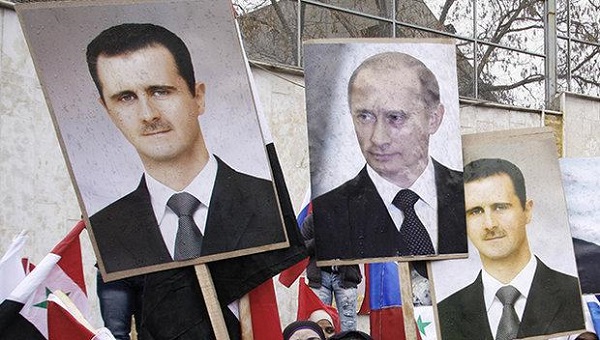
Militarily, the situation remains uncertain but the weight of the Russian military engagement in the last few weeks and the commencement of ground operations early are positive indicators. Whether the ISIS will receive support from any quarters to contest the Russian combine is doubtful because of the reputation that it has established for itself. However, one thing is clear and that is the phenomenon that national boundaries are no obstacles to movement of human beings, arms and other military wherewithal. It may still have multiple sources of funding and manpower. Resistance can therefore continue for long.
The effect on Russia’s own 11 million Muslim (mostly Sunni) populations is an issue of concern for it. A large number of ISIS fighters are from Russia and a long drawn standoff will remain a source of worry for Russia.
Is there a chance for diplomacy to yet succeed? There are configurations likely in various talks in the near future. The Russians are speaking to Turkey, Saudi Arabia, Jordan and just about anyone else. After Assad’s red carpet welcome at Moscow on 21 Oct 2015 it is clear that Russia backs Assad completely. Yet, more consultations are being set up at Vienna where it is likely that Russia will attempt to convince others on the need for treating Assad differently while they all make common cause against the greater danger from ISIS. That is a tall order but that Russia is seen as the lead player in both the military and diplomatic initiatives on West Asia is a great achievement for Putin. The US could not be too happy about this and its own receding importance in as crucial a region as West Asia.
Published Date: 25th October 2015, Image Source: http://www.express.co.uk
(Disclaimer: The views and opinions expressed in this article are those of the author and do not necessarily reflect the official policy or position of the Vivekananda International Foundation)

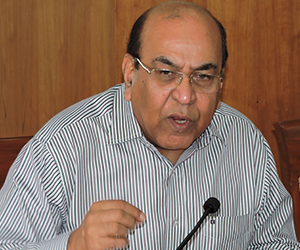
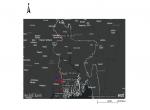
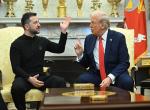

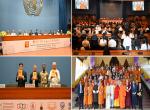




Post new comment